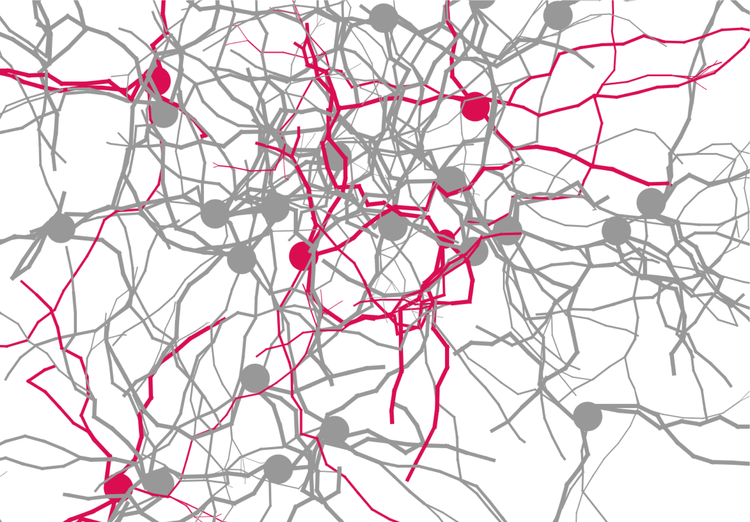Simulating the Self-Organization of Winner-Take-All Networks
Filed under:
Computational neuroscience
Roman Bauer (Institute of Neuroinformatics Zurich), Sabina Pfister (Institute of Neuroinformatics Zurich), Rodney Douglas (Institute of Neuroinformatics Zurich)
Anatomical studies have shown that strong recurrence in local connectivity is a common feature of the superficial neocortical layers of cat visual cortex (Binzegger et al. 2004). The Winner-Take-All (WTA) network is a functional circuit that is in accordance with this type of connectivity (Douglas et al. 1989, Douglas et al. 1995, Douglas & Martin 2004), and is a hypothetical model for the canonical microcircuit. It has been shown to be powerful from a computational point of view (Maass 2000), and also been used in a wide range of applications (e.g. Indiveri 2001, Rutishauser & Douglas 2008, Nessler et al. 2010). We investigate, using the Java-based framework Cx3D (Zubler & Douglas 2009), how this type of network can develop and configure itself in a biologically plausible way. Our simulations begin from a single precursor cell, which encodes it's developmental instructions in a 'gene-like' representation (Zubler et al. 2011). Based on processes such as gene regulation, cell proliferation, axonal outgrowth and Hebbian-type synaptic learning, we obtain neuronal connectivity matching experimental observations of pyramidal and basket cells in layer II/III of cat visual cortex, exhibiting electrophysiological features of WTA networks. The received signal is improved by selecting the strongest input and suppressing low-amplitude noise. Since the developmental rules we incorporate are entirely local, we have shown that WTA-like behaviour can self-organize and calibrate without the instructions of an external agent.

Preferred presentation format:
Poster
Topic:
Computational neuroscience

 Latest news for Neuroinformatics 2011
Latest news for Neuroinformatics 2011 Follow INCF on Twitter
Follow INCF on Twitter
